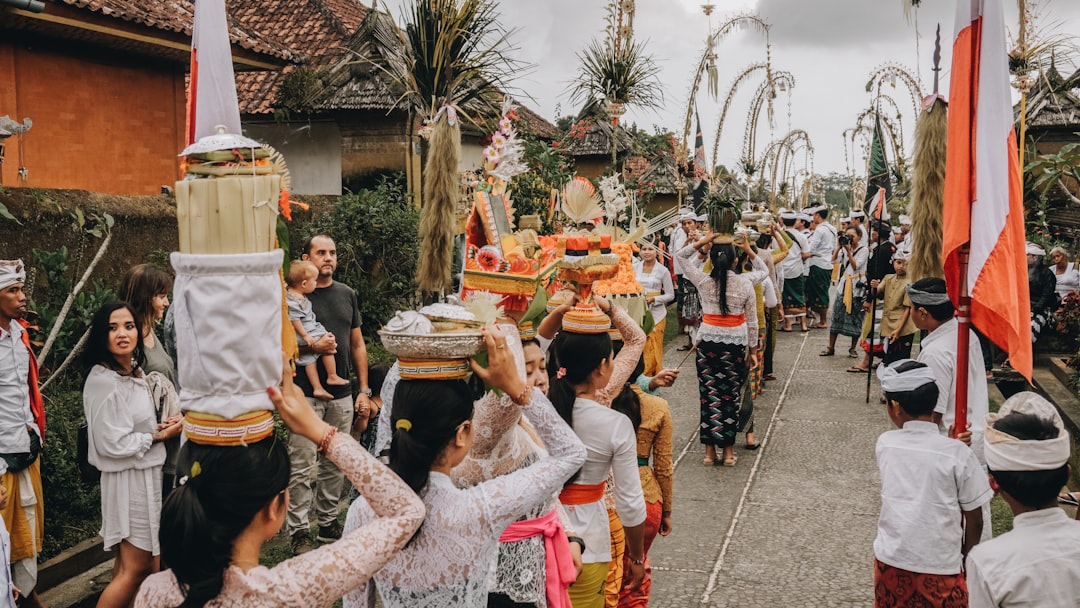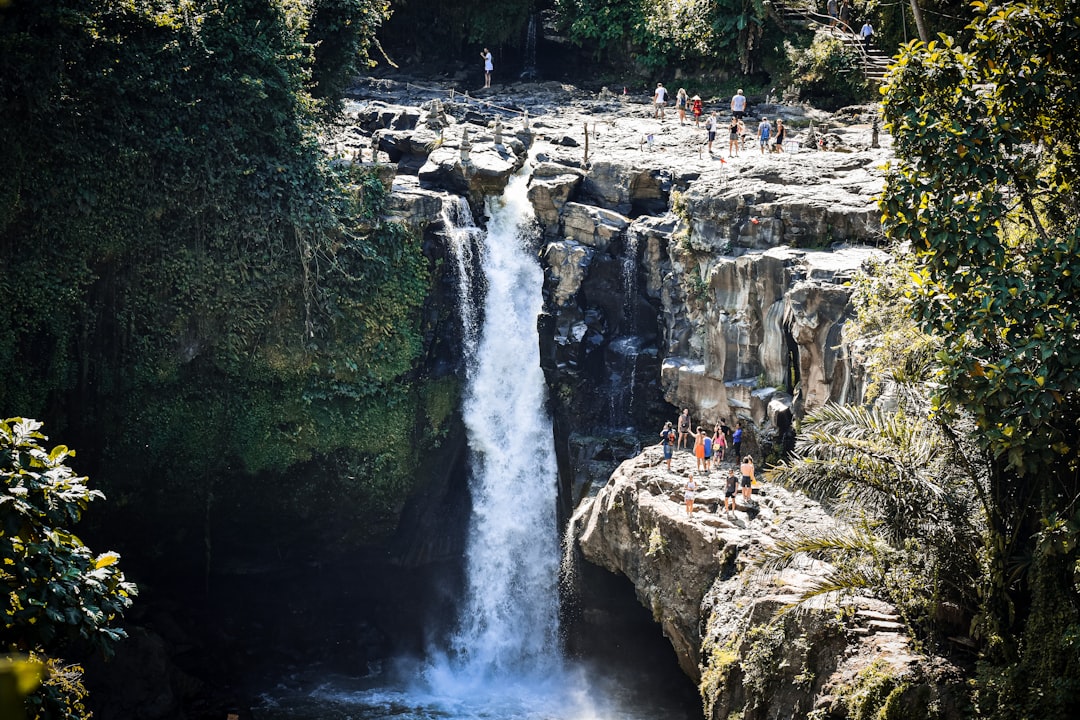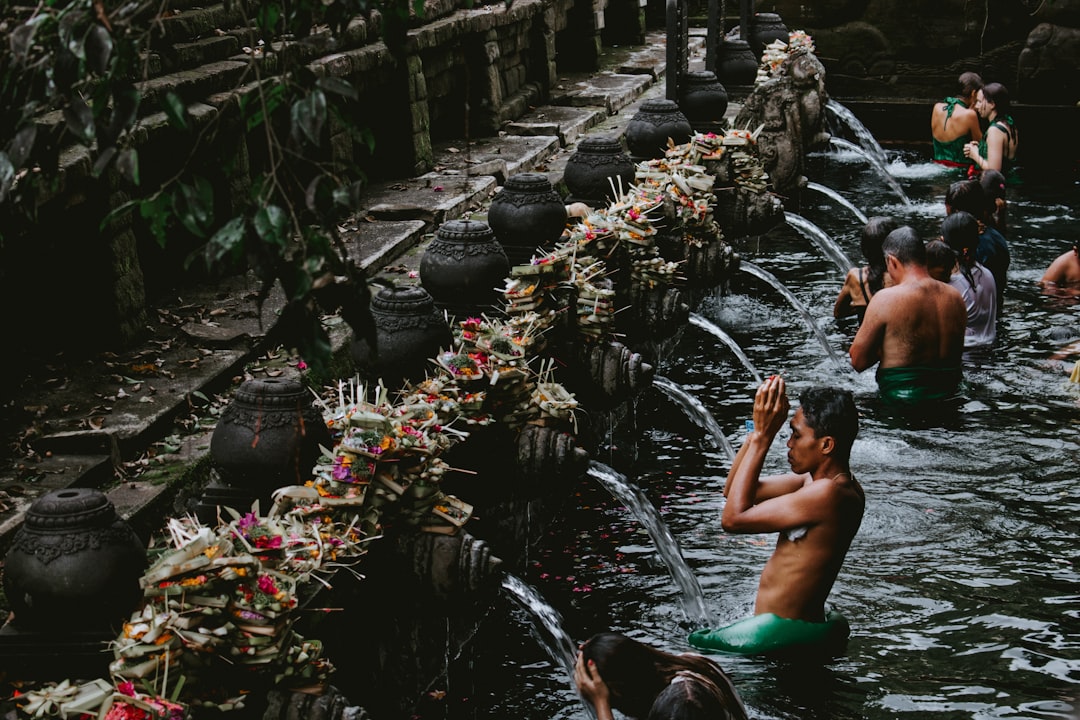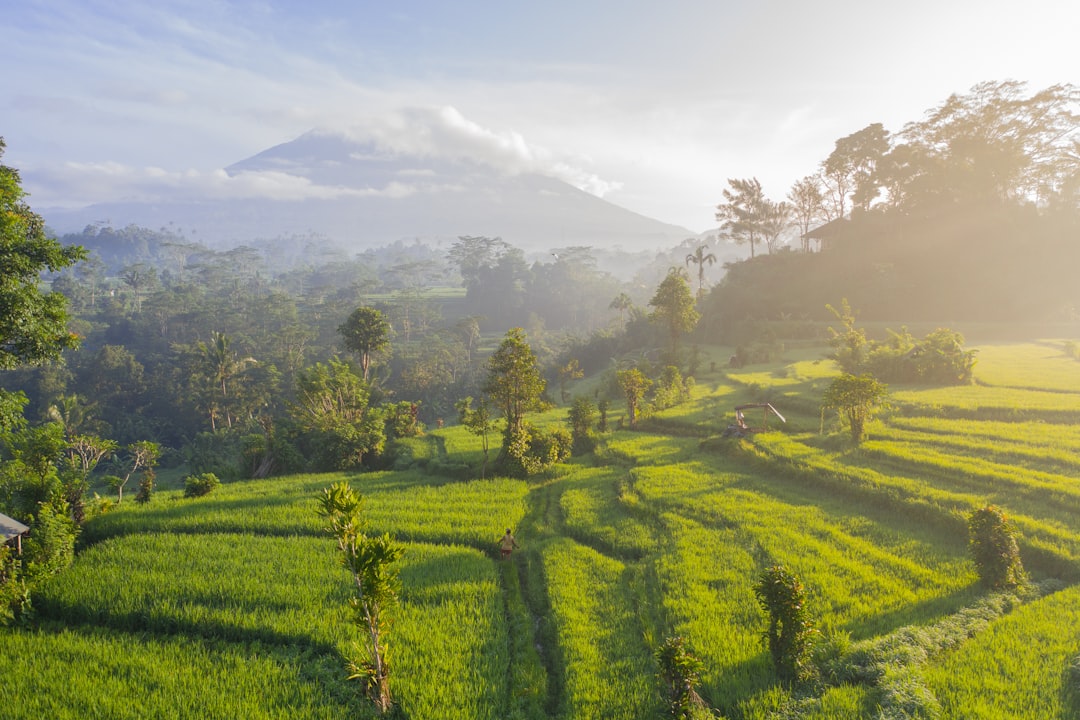Bali is known for its various beaches, lush green landscapes, and vibrant culture. The weather in Bali is diverse, ranging from hot and humid to cool and rainy, and it plays a significant role in shaping the island's tourism industry and natural environment.
This article is your guide to Bali's weather, geography, climate, and the best time to visit to plan your dream Bali vacation.
Table of contents
What is the climate in Bali?
Bali is located in the westernmost end of the Lesser Sunda Islands, lying between Java to the west and Lombok to the east. The island is approximately 8 degrees south of the equator, which means it experiences a tropical climate.
Bali has three main climate zones: the coastal areas, the central highlands, and the eastern regions.

Photo by Ruben Hutabarat / Unsplash
The coastal areas have a tropical climate with high temperatures and high humidity levels, while the central highlands have a cooler weather due to their elevation.
The eastern regions have a drier climate due to their location in the shadow of the central highlands. Factors affecting Bali's weather include its location near the equator, its topography, and the prevailing winds.
When is the best time to visit Bali?
Bali's peak tourist season is from June to September, when the weather is dry and sunny. The island is bustling with tourists during this time, and accommodation and activities can be expensive.
However, the off-peak season from October to March offers many benefits, including lower prices, fewer crowds, and the opportunity to experience Bali's unique wet season. During this time, the island is lush and green, and tourists can enjoy various indoor and outdoor activities, including cultural festivals and unique experiences.

Photo by Shravan Yelburgi / Unsplash
When is the rainy season in Bali?
Bali has two monsoon seasons: the wet season and the dry season. The wet season runs from October to March, when the island experiences heavy rainfall and high humidity.
From April to September, the dry season on the island starts, and it is sunny and dry, with low humidity levels. The monsoon seasons significantly shape Bali's weather, impacting the island's tourism industry and natural environment.
What is the temperature in Bali?
Bali's average temperature ranges from 27 to 32 degrees Celsius, with regional variations depending on the climate zone. The coolest months are June and July, when temperatures can drop to around 24 degrees Celsius, while the hottest months are November and December, when temperatures can reach 35 degrees Celsius.
What are the weather conditions by region in Bali?
Weather conditions in Bali vary depending on the region.
South Bali has a tropical climate with high temperatures and high humidity levels, while central Bali is cooler and drier due to its elevation.
North Bali is drier than the south, but it still experiences high humidity levels.
East Bali is the driest region of the island, with lower humidity levels and milder temperatures.

Photo by Nick Fewings / Unsplash
What is the weather like in Bali per month?
January | January is typically the driest month in Bali, with temperatures averaging around 30°C (86°F) and low humidity levels. This is a great time for beach activities and outdoor activities. |
February | February continues the dry season in Bali, with temperatures remaining high and low humidity levels. This is a popular time for tourists to enjoy the island's beaches and outdoor activities. |
March | March marks the transition from the dry season to the wet season, with increasing humidity levels and occasional showers. Temperatures remain high, averaging around 30°C (86°F). |
April | April is the start of the wet season in Bali, with more frequent showers and higher humidity levels. Temperatures remain high, averaging around 30°C (86°F). This is a great time for indoor activities, such as visiting temples and cultural sites. |
May | May is the wettest month in Bali, with heavy rainfall and high humidity levels. Temperatures average around 29°C (84°F). Despite the rain, Bali still has plenty of indoor activities and experiences. |
June | June marks the transition from the wet to the dry season, with decreasing rainfall and lower humidity levels. Temperatures average around 29°C (84°F). This is an excellent time for outdoor activities, such as trekking and exploring the island's natural wonders. |
July | July is the start of the dry season in Bali, with low humidity levels and occasional showers. Temperatures average around 29°C (84°F). This is a popular time for beach activities and outdoor adventures. |
August | August continues the dry season in Bali, with decreasing rainfall and low humidity levels. Temperatures average around 29°C (84°F). This is an excellent time for beach activities and exploring the island's natural wonders. |
September | September marks the transition from the dry to the wet season, with increasing rainfall and humidity levels. Temperatures average around 29°C (84°F). This is a great time for indoor activities, such as visiting cultural sites and shopping. |
October | October is the start of the wet season in Bali, with more frequent showers and higher humidity levels. Temperatures average around 29°C (84°F). Despite the rain, Bali still has plenty of indoor activities and experiences. |
November | November is the wettest month in Bali, with heavy rainfall and high humidity levels. Temperatures average around 29°C (84°F). This is a great time for indoor activities, such as visiting temples and cultural sites. |
December | December marks the transition from the wet to the dry season, with decreasing rainfall and lower humidity levels. Temperatures average around 29°C (84°F). This is a popular time for beach activities and outdoor adventures. |
What activities can you do during the rainy season?
Bali's wet season offers a range of indoor and outdoor activities for tourists to enjoy, even on rainy days. Indoor activities include visiting museums, shopping, and trying traditional Indonesian cuisine.
Outdoor activities, such as trekking, rice paddies tours, and visiting water temples, can also be enjoyed with a rain jacket and waterproof shoes. The wet season is also a time to experience Bali's lush and green landscapes, and tourists can take advantage of the lower crowds to try off-the-beaten-path experiences.

Photo by Mauro-Fabio Cilurzo / Unsplash
Does Bali experience tropical storms?
Bali is located in a tropical region, so it is susceptible to tropical storms and typhoons. These storms can cause heavy rainfall, strong winds, and rough seas, impacting tourism, transportation, and local communities.
Tourists in Bali should be prepared for the possibility of tropical storms and typhoons and familiarize themselves with the local emergency procedures. Preparing for a storm in Bali involves having food, water, and other essentials, staying informed about weather updates, and following safety tips during the storm.

Photo by Florian GIORGIO / Unsplash
What is the humidity and air quality in Bali?
Bali's average humidity levels range from 70 to 90 percent, depending on the season and location. High humidity levels can impact comfort, making the air feel heavy and oppressive. Air quality in Bali is generally good, but it can be affected by pollution from traffic, industry, and agriculture.
Tourists should be aware of air quality levels and take steps to protect themselves, such as wearing a mask and avoiding outdoor activities during periods of high pollution.
Bali experiences an average of 8 hours of sun daily, with the UV index reaching high levels, particularly during the dry season. Tourists in Bali should protect themselves from the sun by wearing a hat, sunglasses, and sunscreen and seeking shade during the hottest day.
What to pack for Bali's weather?
Packing for Bali's weather depends on the time of year and planned activities. Essential items for the dry season include lightweight clothing, a hat, sunglasses, and sunscreen.
Essential items for the wet season include a rain jacket, waterproof shoes, and an umbrella. Clothing recommendations for different activities, such as beach and trekking, should also be considered.
In conclusion, Bali's weather is a complex and diverse aspect of the Indonesian island, shaped by its location, topography, and prevailing winds.
Whether you're visiting during the dry or wet seasons, Bali's weather has something to offer everyone. Bali's unique climate and environment are waiting to be explored, from sunny beaches to indoor activities, cultural events, and natural wonders.
FAQs When Is The Best Time To Visit Bali?
1. What is the weather like in Bali?
The weather in Bali is tropical, with temperatures averaging around 29-30°C (84-86°F) and high humidity levels. Bali has two distinct seasons: the wet season (October to April) and the dry season (May to September). During the wet season, there are more frequent showers and higher humidity levels; during the dry season, there is less rainfall and lower humidity.
2. When is the best time to visit Bali for good weather?
The best time to visit Bali for good weather is during the dry season (May to September), with less rainfall and lower humidity levels. This is a popular time for beach activities and outdoor adventures. However, it is worth noting that the island remains warm and humid year-round, and indoor activities and experiences can be had during the wet season.
3. Is it always hot in Bali?
Yes, Bali has a tropical climate and is warm and humid year-round, with temperatures averaging around 29-30°C (84-86°F).
4. Does Bali have a rainy season?
Bali has a wet season from October to April, with more frequent showers and higher humidity levels.
5. What is the average temperature in Bali?
The average temperature in Bali is around 29-30°C (84-86°F).
6. Is the weather in Bali humid?
Yes, Bali has a tropical climate and high humidity levels year-round.
7. Can you still enjoy the beach during the rainy season in Bali?
You can still enjoy the beach during the rainy season in Bali, although there may be more frequent showers and higher humidity levels. This is a great time for indoor activities and experiences, such as visiting temples and cultural sites.
8. Are there any weather-related events in Bali?
Yes, there are festivals and events in Bali that celebrate the changing seasons and the impact of the weather on the island. For example, the Nyepi Day festival is held during the wet season to mark the start of the Balinese New Year and is a time for reflection and self-purification.
9. Does the weather in Bali affect tourism?
The weather in Bali can affect tourism, as visitors flock to the island during the dry season (May to September) when there is less rainfall and lower humidity levels. The tourism industry in Bali adapts to changing weather patterns and offers a range of indoor and outdoor activities and experiences year-round.
10. How does the weather in Bali change throughout the year?
Bali has two distinct seasons: the wet season (October to April) and the dry season (May to September). During the wet season, there are more frequent showers and higher humidity levels; during the dry season, there is less rainfall and lower humidity. The weather in Bali is warm and humid year-round, with temperatures averaging around 29-30°C (84-86°F).
If you think we missed any additional information, send us a message, and we would be happy to update this article.
>>>> First time in Bali, read our guide to currency in Bali, Indonesia. Need a driver? You can pre-book your private car service before arriving in Bali.
🥥🌴🍍🌸Beauty Guide Bali Tips🥥🌴🍍🌸
Check out the cheapest flight to Bali today! Visit Wayaway.com
Book your accommodations in advance to get the latest hotel deals, visit Booking.com & Agoda.com
Arrange your Airport transfers to your hotel via Klook.com and avoid the stress of negotiating.
Learn the best way to go around Bali. Book a Private Car via Klook or Rent a bike via Bikago.
Learn how to register your phone in Bali. If you’re an iPhone user & don't want to register your phone, get your eSIM via Airalo.com.
Not sure when to fly out from Bali? Get your Onward Ticket fast for your visit.
Get Travel Insurance with Safetywing.com and worry less if any accidents happen.
Book your tours and activities before departure with Get Your Guide, Viator, and Klook.
Get your ferry tickets to Nusa Penida or other islands in Indonesia via 12go.com
Browse safely in Bali, and protect your mobile device with Nord VPN.
* Disclaimer: Some links in this blog are affiliate links; if you make a purchase at no extra cost, we receive a commission. We thank you in advance, as it helps to keep this website going. For more information, visit our disclaimer page.
